When Minette Tonoli’s lifelong dream finally came true, moving into a beautiful homestead in May 2019, she was convinced it was going to be the ‘year of abundance’, harvest baskets overflowing with organic produce, and the pantry filled with preserved bounty.
Instead it became the year this herb lady turned into ‘herbicide lady’.
This article was first published in Organic NZ, March/April 2020.
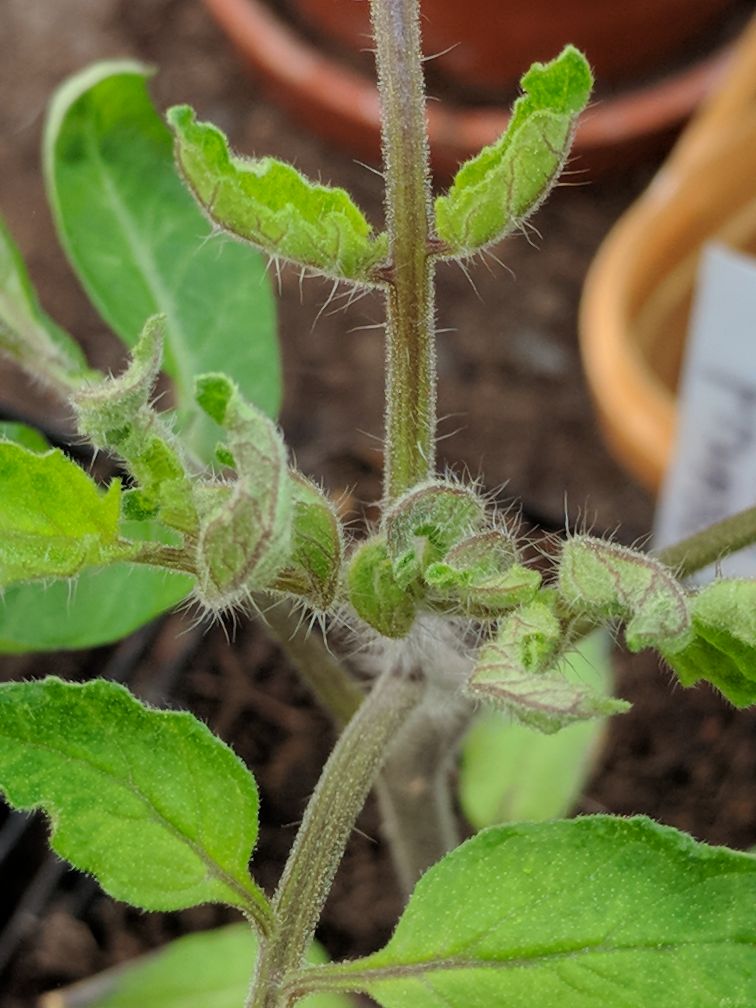
Tomato leaves showing twisted growth
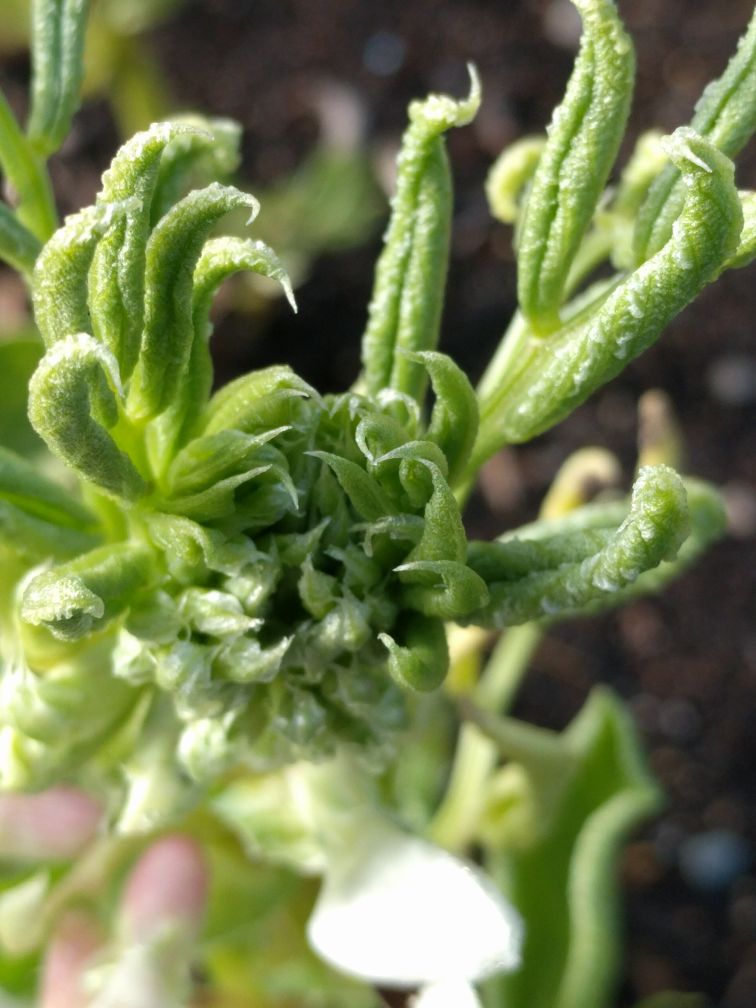
Broad beans herbicide injury
STUNTED, TWISTED VEGE PLANTS
Transplanted broad beans in my newly established potager garden soon started growing bizarrely with new leaves that were hardened, curled and twisted. Snow peas had similar misshapen leaves, as did hundreds of heirloom tomato seedlings that grew stunted, with older leaves cupping, and new leaves forming shepherd’s crook or fiddleneck distortions.
While there are many reasons for leaf curl, including physiological damage due to watering problems (too much, too little, or inconsistent), fluctuating temperatures, insect infestation and viral infection, none of these seemed to be the right answer across the board for all the plants affected.
Plants most likely to be affected:
- Solanaceae, e.g. tomato, potato, chillies, etc.
- Fabaceae, e.g. beans, broad beans, peas, etc.
- Asteraceae, e.g. artichoke, dahlia, Jerusalem artichoke, lettuce, etc.
- Vitaceae – grapes
- Rosaceae, e.g. roses, loganberry, raspberry, etc.
- Umbelliferae, e.g. carrots, celery, parsley, etc.
Plants least likely to be affected:
- Poae, e.g. grass crops such as wheat, barley, corn, etc.
- Brassicaceae , e.g. cabbage, mustard, cauliflower, broccoli, pak choi, kohlrabi, etc.
- Amaranthaceae, e.g. amaranth, beetroot, silverbeet, spinach, etc.
- Cucurbitaceae, e.g. pumpkin and squashes are only slightly susceptible, and still produce well.
Diagnosing the problem
Soil tests are expensive for home gardeners, so I compared my plants to online pictures of herbicide-damaged growth and they correlated exactly – I had found the most likely culprit: pyridine carboxylic acid herbicides. I knew these types of herbicides weren’t used on my property, and because of the pattern of plants affected, could not blame spray-drift.
Various savvy friends and experts in the organic gardening world agreed that the most likely source of contamination was the vegetable soil mix I had brought in from a landscape supply yard.
My garden had fallen victim to ‘killer compost’.
Killer compost is a term given to compost, soil and manure mixes that contain high enough levels of persistent pyridine herbicides to negatively affect non-target plants such as homegrown vegetables.
Certified organic soil and compost mixes should be free of these residues, but only if they are pure. The vege mix I bought was made up of certified organic compost and added manure, and I think it was the manure that contained residues.
How do these herbicides sneak in?
Pyridine herbicides are used to deal to a range of broadleaf weeds in pastures, grain crops, sports grounds and commercial turf, recreational parks, native forests, some fruit crops, and for roadside maintenance.
The Environmental Protection Authority of New Zealand (Te Mana Rauhī Taiao) regulates the registration of products containing these herbicides, and there are labelling laws and restrictions on the sale and use of products containing these chemicals. Most are banned for home use (since 2008), and require commercial operators to have safe handling certification.
With seemingly all the required legislation in place, it could only be through end-user ignorance of how these chemicals work and degrade that herbicide-contaminated hay, grass, manure etc. end up in commercially available home garden soil mixes. Horse manure and hay sold on the roadside are not regulated, and may contain these herbicides.
Generally, pyridine herbicides are brought into the home garden via one of the following three pathways:
- Contaminated mulch such as hay, straw, and grass clippings from crops on which the herbicide was used.
- Contaminated manure and soiled bedding from livestock such as cows, sheep, pigs and horses, that have eaten crops treated with the herbicide.
- Contaminated composts that were made using above inputs.
How do these herbicides affect the plants?
Once the herbicide is taken up by susceptible plants, it moves systemically to growing tissues, deregulating metabolic pathways, causing uneven cell division and growth. Plants affected do not produce well, if at all, and may die.
How easily do they degrade?
Many of these herbicides are very persistent in the environment, are stable in water, don’t degrade in anaerobic environments, and are highly mobile – one study found picloram residues in an untreated site a kilometre away from the original application site, up to two years later.
How to heal contaminated soil
- The herbicides degrade in soil over time, and active cultivation and soil amendments may speed up this degradation.
- Get the soil microbiology teeming as a first priority. The most effective pathway of degradation of persistent herbicides is its decomposition by microbes.
- Cultivate the soil often to expose all parts to soil life, water, and sunlight (UV).
- Using activated carbon to bind to the herbicide in the soil has also been put forward as a solution.
- Mycoremediation, using beneficial fungi, is another option. Although little research exists, this is one of the methods I am trialing.
DON’T COMPOST AFFECTED PLANTS
Don’t compost anything that comes from your affected garden, including manure from animals you fed from it. The herbicide chemicals bind strongly to plant material and neither plant and animal metabolising, or home composting, will degrade it sufficiently. Best bet is to bin it – in council refuse, NOT green waste.
Is there hope once plants have taken up the herbicide?
My affected tomatoes, which were transplanted into clean soil, have recovered somewhat and are flowering and setting fruit, although they are not nearly as large or productive as normal. Tomato plants I left in tainted soil have not recovered, growing spindly and stunted, with only a handful setting fruit which are deformed and tasteless.
Can you eat the produce?
There seems to be a consensus that produce grown in soils containing low levels of these herbicides are fine for human consumption, although some reports also indicate possible health concerns, following observations in laboratory animals fed with moderate to high doses.
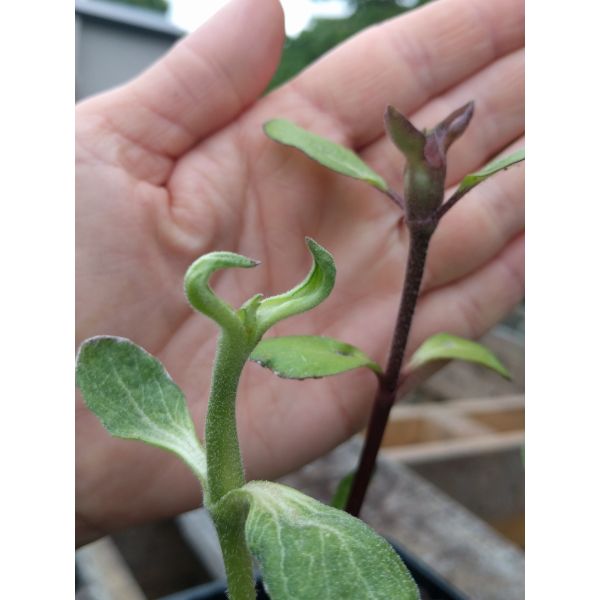
Sunflowers herbicide injury
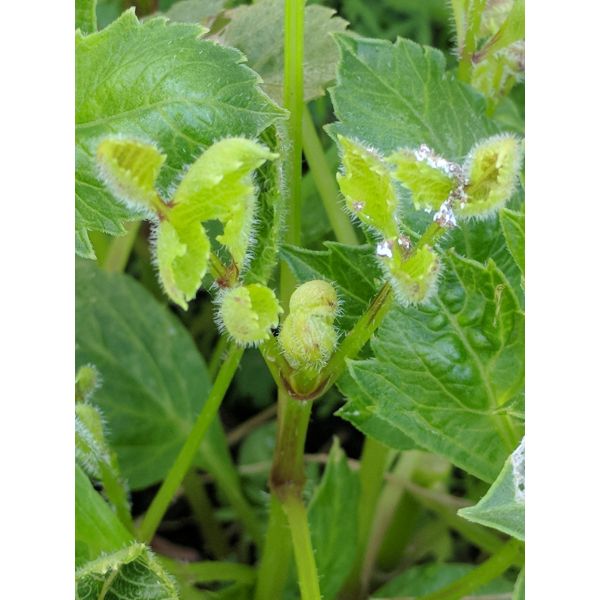
Dahlia affected by herbicide
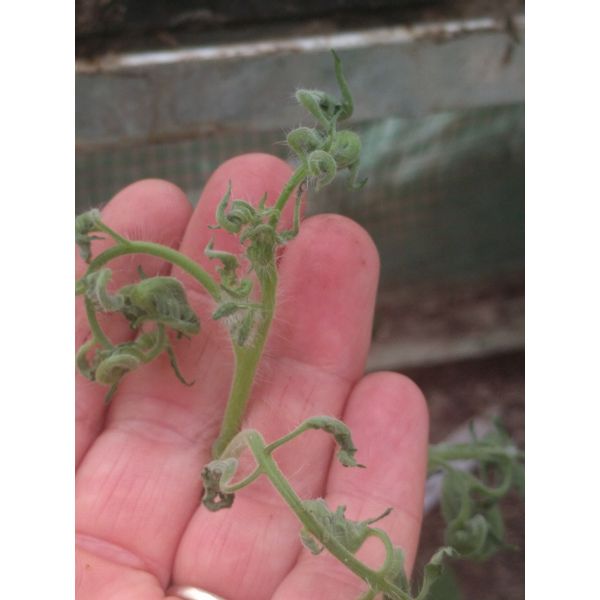
Tomato twisted growth
By seeing this experience as a learning opportunity, and educating others about killer compost, I still managed to turn it into a season of abundance – I may not have the fresh produce, but my cup of knowledge overflows.
CHEMICAL CULPRITS
These are the three pyradine herbicides most commonly used in NZ.
Chemical name
(sold under various brand names)
Level at which residues are toxic to non-target plants (parts per billion)
Half-life in soil (days)
Aminopyralid
Clopyralid
Picloram
1-3 ppb
1-3 ppb
10 ppb
32-533
60-425
30-400
For highly susceptible plants, such as tomatoes, toxic levels of these herbicides are 1–3 parts per billion – equivalent to about half a teaspoon of herbicide product in an Olympic-sized swimming pool.
References
- The United States Composting Council. 2015. Understanding Persistent Herbicides. www.compostingcouncil.org/resource/resmgr/images/USCC-PH-Fact-Sheet-1-for-web.pdf.
- The United Kingdom Waste and Resource Action Program. 2010. An Investigation of clopyralid and aminopyralid in commercial composting systems: www.wrap.org.uk/sites/files/wrap/Clopyralid%20Report.pdf
- Beyond Pesticides factsheets on:
- Aminocyclopyrachlor: www.beyondpesticides.org/assets/media/documents/ACPRegistration.pdf
- Aminopyralid: www.beyondpesticides.org/assets/media/documents/infoservices/pesticidesandyou/documents/aminopyralid.pdf
- Clopyralid: www.beyondpesticides.org/assets/media/documents/pesticides/factsheets/clopyralid.pdf
- Picloram: www.beyondpesticides.org/assets/media/documents/pesticides/factsheets/Picloram.pdf
Further reading
- Israel, Trevor D, G Neil Rhodes Jr, Annette Wszelaki. 2013. Diagnosing Suspected Off-target Herbicide Damage in Tomato. UT Extension publication W295-B. University of Tennessee.
- Diagnosing Herbicide Injury on Garden and Landscape Plants, Purdue University, 1991. www.extension.purdue.edu/extmedia/ID/ID_184_W.pdf
- FAQ, Manure Matters, Corteva. www.corteva.co.uk/manure-matters/faq.html
- www.invasive.org/gist/products/handbook/18.Picloram.pdf
- Portraits of plants damaged from herbicides in compost. MeadowSweet Herbs and Flowers. meadowsweet.co.nz/2019/11/08/portraits-of-plants-damaged-from-herbicides-in-compost-soil-manure-mix/

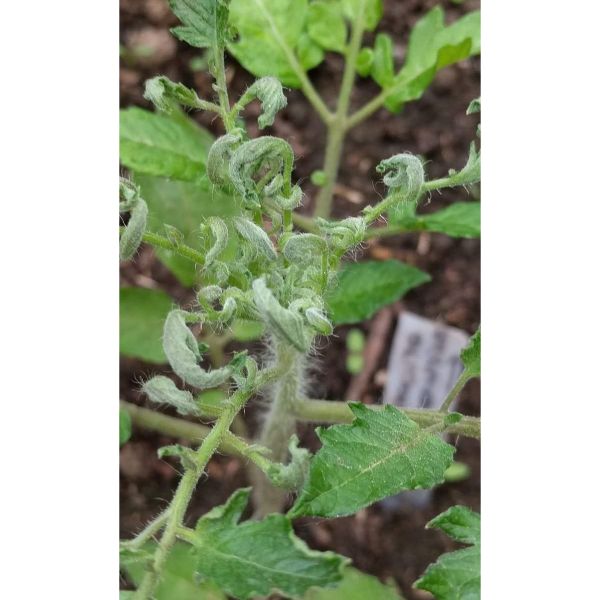


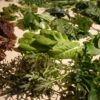
1 Comment
Pretty sure this is what happened to me. I spent a lot of money on ‘organic’ compost so I could get started quickly. I have health issues, so I don’t think I will be eating the produce.
I have a zucchini plant that is doing really well & the plants around it are also doing better – these are cowpeas and lady cream peas, which were greatly affected. I had first planted the zucchini in the raised bed (most heavily contaminated site since it is mostly compost) but then transplanted it since it did not have enough room to grow (I’m new at this so I made spacing errors). I transplanted to a mound made of compost (same product but different bag and so perhaps a different lot), coco coir and native clay soil. I added a bit of organic 4-3-3 fertilizer and also dusted the root ball with lots of commercial mycorrhizae. So I’m wondering if the improvements were due to a) clean compost b) fertilizer or c) mycorrhizae. If the answer is ‘c’ I’m wondering if the zucchini was especially good at forming a relationship w/ the fungi since other plants treated with it (incl. other cucurbits) did not seem to do as well.
I have thought about growing corn in the raised bed and then throwing it out as a bioremediation method. I could perhaps grow zucchini instead – they both make a lot of biomass. It’s sad to add to the landfill but at least it is organic matter that will break down.
Seems like I will need to do the ‘bioassay’ thing regularly & lady cream peas might be the most sensitive plant. Recently I used some old okra seed and germination was only 15% and those that did sprout looked like they may be affected. I am trying again with new seed to see if they are more sensitive or if the problems were just due to old seed.